
by | Oct 28, 2025 | Uncategorized

Earthquakes are powerful natural disasters. They can shatter the ground and shake up large structures. This amount of power can bring about huge amounts of damage. If you live in an area close to a fault line, you may be concerned about protecting your home.
Having the right insurance can financially cover your assets in the case of an earthquake. To help you understand the basics of earthquake insurance, here are the most important facts to know:
Deductibles are different for earthquake insurance
A deductible is the amount you pay out-of-pocket for damages before insurance coverage. While all policies are different, the deductibles for earthquake insurance policies tend to be higher than standard homeowners insurance.
It’s common for earthquake insurance to have different deductible amounts for different categories of coverage. For example, you may have different deductibles for structural damage, personal items and other structures on your land.
Coverages
Earthquake insurance offers dwelling coverage, personal property coverage and temporary housing. Structural damage is a major risk of earthquakes, but in some extreme cases your belongings may also be damaged beyond repair. Some policies will either replace or reimburse you for a percentage of the item’s value.
If you cannot stay in your home as repairs are being made, your insurance can help you pay for temporary lodging at a hotel or short-term rental.
Earthquake insurance exclusions
Not all damages occurring during an earthquake are covered under earthquake insurance. For example, your car may become damaged during an earthquake. This would be covered by your auto insurance rather than your homeowners insurance.
Some other common items excluded from earthquake coverage include:
- Personal landscaping.
- Satellite antennas.
- Structures found underground outside the property walls. This can include pipes, drains, wiring and more.
There are several ways to minimize the damages of an earthquake on your property. One best practice is to bolt heavy furniture items like bookcases to the walls to prevent them from falling. Securing other large furniture items, including those outside, is an excellent way to mitigate possible damage to your property and the items themselves.
If you live in an area close to a fault line, you may be more likely to experience an earthquake. To find out how much coverage you need, consult a local insurance provider for details on how to better protect your home and belongings.
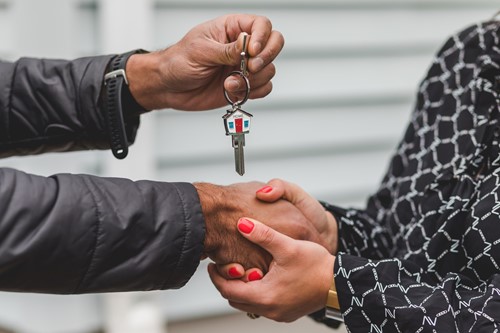
by | Oct 21, 2025 | Uncategorized

Prospective homebuyers and current homeowners know that a mortgage is likely to go hand-in-hand with your home, unless another arrangement has been made. However, there are many options available for those monthly mortgage payments, most commonly through 30-year fixed rate mortgages and 15-year fixed rate mortgages.
Most know about the 30-year option, but what about the 15-year fixed mortgage?
Here’s a quick guide to three of the top questions surrounding a 15-year mortgage:
Who is applicable for a 15-year fixed rate mortgage?
Most homeowners and potential homebuyers can be eligible for a 15-year fixed rate mortgage. The qualifications will follow those set forth by your mortgage lender and can vary based on the property you find or your personal financial situation.
For those who have a secure investment and savings future and proven income stability, you may be more likely to gain a mortgage with a 15-year payoff. Likewise, you may have a limited pool of housing options available, since the loan is likely to be a bit smaller than your average 30-year mortgage.
What are the interest rates like?
Interest rates for a 15-year fixed mortgage may be lower than those of a standard 30-year mortgage. This is typically because you’re voluntarily paying higher monthly payments and have signed off on paying your loan in full within the 15-year period.
What will my monthly payments look like?
Because the loan term is shorter, your monthly mortgage payment may be larger by up to 50% (or more, depending on the loan) of what it would have originally been in a 30-year fixed mortgage. However, larger doesn’t have to be scary.
For those with a secure financial future, excellent financial health and who may not need as much property for their plans or lifestyle, a 15-year mortgage is more than an adequate option. Like a 30-year mortgage, you’ll want to ensure you’re ready for the larger monthly payments, applicable interest rate and quick-building equity that a 15-year fixed mortgage provides.
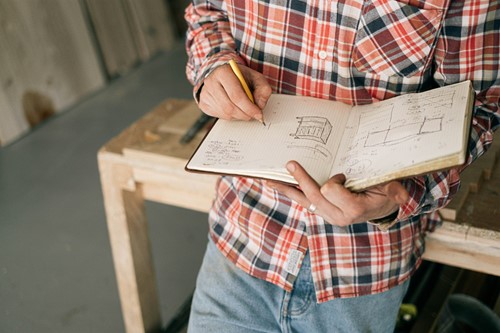
by | Oct 14, 2025 | Uncategorized

Whether you’re a crafting enthusiast or simply want to save some money on home decor, DIY furniture projects are a great place to start. With so many DIY projects on the table, it can be difficult figuring out if you should start with the coffee table or the DIY wooden bench. Don’t fret. Here are a few DIY furniture projects for your bedroom to get you started:
Transform a door into a headboard
Old or unused doors are an excellent source of scrap wood for DIY projects. One great way to use an old door is to upcycle it into a headboard. Remove the hardware, buff out any scratches and clean off residue. Then, you can choose to finish it with a coat of paint or use a clear finishing coat to protect your new furniture piece.
You can either attach the new headboard to the bed frame or simply lean it against the wall for a simple DIY furniture aesthetic.
Turn old drawers into trendy wall shelves
If you have an unused dresser or cabinet with empty drawers, consider using them to make DIY shelves. Depending on your preference, you can remove the drawer pulls or leave them attached for a funky, rustic vibe.
Simply turn the drawers open-face out against the wall and attach with brackets. This DIY furniture project is versatile enough for any room of the home, and especially useful for storage and display in your bedroom.
Make a mid-century modern bedside table
Hairpin leg tables are a staple of mid-century modern design and simple to DIY. All you need is a set of metal pin legs and your choice of surface. A round piece of natural wood is a perfect addition to the minimalist metal legs, and makes attaching the pieces as simple as screwing in brackets. Use this piece of DIY furniture as a stylist nightstand or accent table.
These are only a few ideas for making your own furniture. With a little creativity and basic tools, you can create unique decor out of a variety of objects and materials.
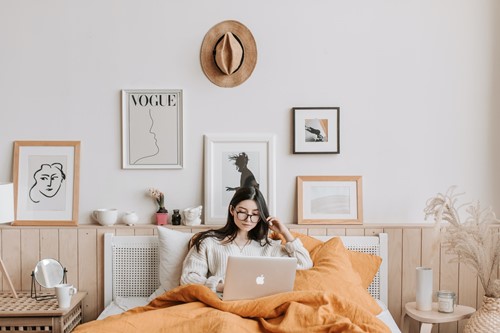
by | Oct 7, 2025 | Uncategorized

In the design world, the term cozy is often mistaken for small. While the two characteristics certainly overlap in many cases, it’s still entirely possible for larger, open spaces to be cozy. The key to coziness is a sense of closeness and tactile comfort. By utilizing these two concepts you can make virtually any room in your home feel cozy, no matter the size.
Volume & Layers
If you’re trying to increase the level of coziness in your bedroom, the best place to start is with the bed itself. Increasing the volume and amount of both pillows and bed linens will instantly boost the feeling of comfort and make the bed look extra inviting. The key is to avoid using so many pillows that the bed feels crowded. You’ll also want to avoid too much symmetry and matching so your bed does not look like it belongs in a stuffy, overly formal hotel.
When it comes to blankets and comforters, the fluffier the better. If you live in a warm climate where multiple blankets and comforters might be too much, you can still create the same level of coziness with lighter fabrics. Opt for linen and cotton in a mixture of textures.
Use the Space Efficiently
Another way to make a room extra cozy is by using up the space. This doesn’t mean that you have to fill every square foot, but it does mean you want to avoid any large empty spaces. To start, assess the corners of your bedroom. Empty corners should ideally have something in them, whether it be a piece of furniture, a floor lamp, a potted plant or otherwise. Using the corner space will simultaneously make the room feel more cozy without diminishing the available space you have.
Don’t Forget the Floor
Area rugs are a one-step upgrade in coziness for any room. For the bedroom specifically, you can make the space extra cozy by choosing the perfect size and shape of rug to compliment the layout. Design experts say you should have a certain amount of space between the rug and the walls, as well as the correct amount of overlap when pairing a rug with large furniture pieces like the bed or a dresser. The most important thing is to choose something that feels good as well as looks good. Making things cozy is just as much about tactile experience as it is about looks.
Layering rugs is a trend made popular in more eclectic and boho design styles that can also add coziness. This is especially beneficial in a large room with a lot of floor space. Layering rugs of unique patterns, materials or colors can make the floor not only pleasant to walk on, but exude a sense of comfort from the bottom up.
The concept of “cozy” is hard to define. It’s something that feels and looks different for everybody. However, the above tips should help you get started if you’re looking for ways to add more comfort to your bedroom. From there, you can develop your own personal version of cozy for maximum comfort and aesthetic.
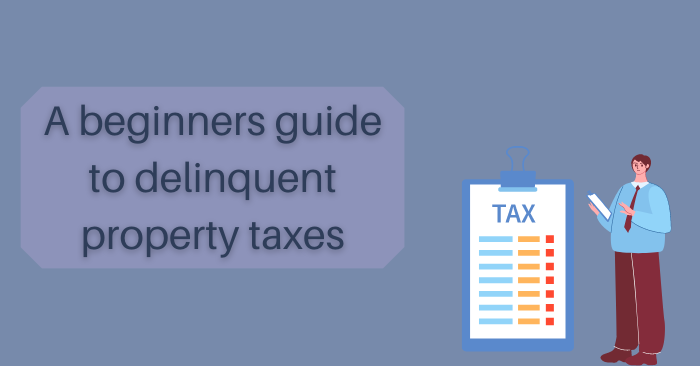
by | Sep 30, 2025 | Uncategorized

Homeownership comes with many responsibilities, one of these being the payment of property taxes. Property taxes are due each year and are used by local governments to pay for public resources such as parks, schools, public safety workers, and more.
If you don’t pay these taxes and allow them to pile up, you’ll be noted by the government as a delinquent taxpayer. This is why it’s crucial to understand what it means to be a delinquent taxpayer and how to remove the status if you’re unable to pay.
When are homeowners considered “delinquent taxpayers?”
Every state has guidelines on when taxes are due and at what point after nonpayment they are considered delinquent.
Local governments typically operate off the fiscal year, which runs from July 1st to June 30th. Most states have a due date at the beginning of the year for taxes to be paid, and anything after this date is considered to be delinquent.
How do homeowners remove themselves from the delinquent taxpayer list?
If there are tax liens against your home, and you’ve been listed on the delinquent taxpayer list, good news – there are ways to be removed from the record.
The first and most common way is through a payment agreement where you pay off the amount due over a give time frame.
You can also get rid of a delinquent status by utilizing property tax aid provided by your state if you qualify for tax relief.
Property taxes can be intimidating at times. However, your local government division provides online and in-person resources to help you understand your tax payment options.
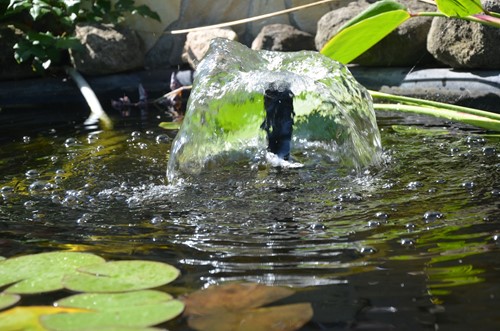
by | Sep 23, 2025 | Uncategorized

If you want to add a pond or water feature to your yard, it might surprise you at how simple the process is. With some basic tools and only a few materials, you can make a tranquil custom water feature to add dimension and style to your outdoor space. Here we’ll go through the steps to make your own DIY garden pond.
Materials
Shovel
Rubber pond liner
Spray paint for marking
Sand
Rocks/stones for the base and edges
Plants
Small fountain (optional)
Process
-
First, you will need to prepare the area for your pond. This means removing any rocks, plants or debris and enough room to build.
-
Measure out the space for your pond and mark the boundaries with spray paint. This will be your digging guide.
-
Dig out the shape for your pond at least 2 feet deep. The shape doesn’t have to be perfect—the more irregular the more natural it will appear.
-
After digging the hole, pour in a layer of sand. Cover the soil completely to a depth of about 2 inches. Around the sides, build up a thicker layer of sand and taper it down towards the middle of the pond.
-
Lay down the pond liner so that it molds to the shape of the pond hole. Tamp it down into the edges but be careful to completely cover the entire area with some extra overlap. Secure the edges with rocks or stones.
-
Add the fountain pump at the deepest part of the pond. Use additional rocks around the base to make sure it stays upright.
-
Cover the bottom of the pond with your pond stones. You can use a mixture of sizes but save the larger ones for the edges. Try to mimic the look of boulders and be creative with your placement.
-
Next, add your choice of plants around the edges. You can try to create a natural look with local plants or make something completely of your own design. Try mixing plants of different sizes and textures for visual appeal.
-
Fill the pond with water and test the fountain to make sure the water flows. You can also adjust placement if it’s too low or sitting too high in the water. Once you have the perfect flowing water sound, you’re all set.
Hardscaping and adding water features can be complex processes. Luckily, this project you can accomplish in a weekend at any skill level. As long as you follow the fountain instructions carefully you’ll have an excellent water feature to add depth and tranquility to your yard.







